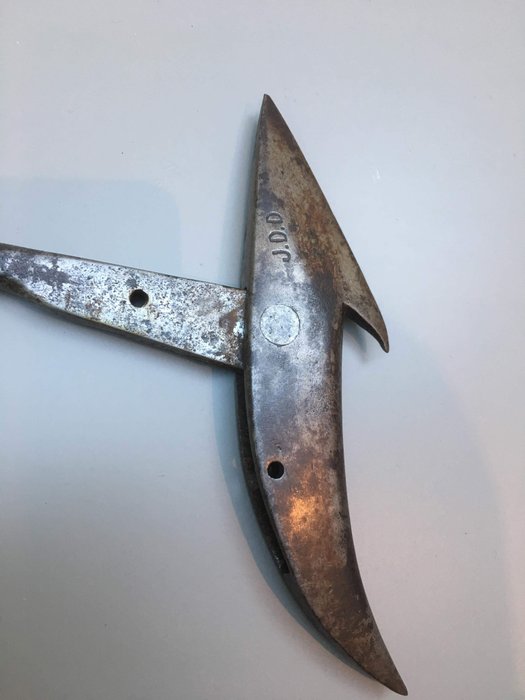N.º 16770283

rare whaling gun iron darts toggle harpoon american antique
N.º 16770283

rare whaling gun iron darts toggle harpoon american antique
American, 19th century. Gun toggle harpoon
Signed J. D .D
Just under 58 cm long.
Please see Museum New Bedford Info in picture.
Info from google:
Driggs served his apprenticeship during the 1840s with the James Durfee Company, then the largest and most productive enterprise of its kind in New Bedford. He and another Durfee employee, Joseph Dean, established their own shop near Merrill’s Wharf in 1846, under the name of Dean & Driggs. The two smiths produced a good quality whalecraft–harpoons, cutting irons, ship’s fittings, etc.–in a successful partnership that lasted almost 30 years. Their shop, located in an alley that came to be known as Driggs Lane, was equipped with five forges and machinery run by power tapped from a neighboring flour mill. They employed as many as three journeymen at a time, one of whom was Lewis Temple, Jr., son of the black shipsmith who in 1848 invented the practical toggle harpoon which made capturing whales much more successful than it previously had been.
After Dean’s retirement in 1875, Driggs continued for 10 years in the Driggs Lane shop, probably at a reduced level of production. In 1885, with the whaling industry on the wane, and having himself reached the age of 65, Driggs relocated to the wharf (a move of only a few hundred feet) in a new, smaller shop that he built with his grandson’s help. This new shop, the one currently exhibited at Mystic Seaport, served Driggs’ needs until 1902, when it was sold to Ambrose J. Peters. Driggs died shortly thereafter.
James D. Driggs' shipsmith shop was built at the head of Merrill's Wharf (now Homer's Wharf) in New Bedford, Massachusetts, in 1885, and is the only manufactory of ironwork for the whaling industry known to have survived from the nineteenth century. Information courtesy of the Mystic Seaport Museum.
Este objeto apareció en
Cómo comprar en Catawiki
1. Descubre algo especial
2. Haz la puja más alta
3. Paga de manera segura
